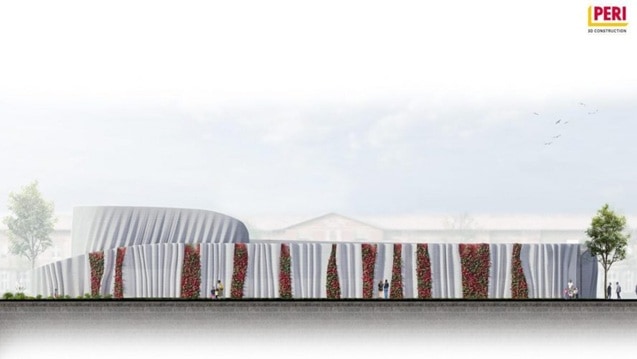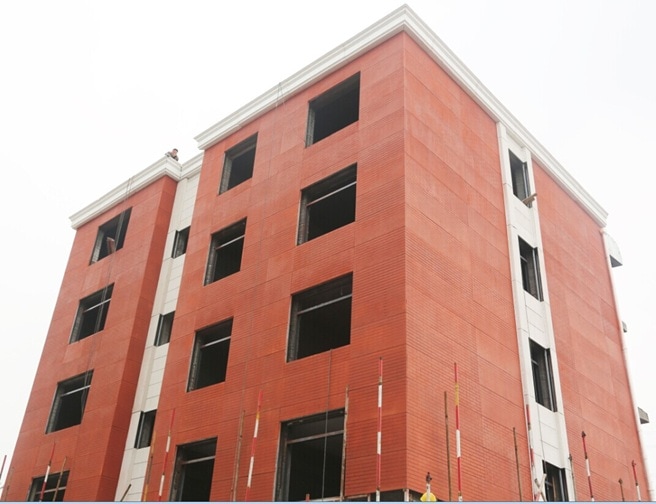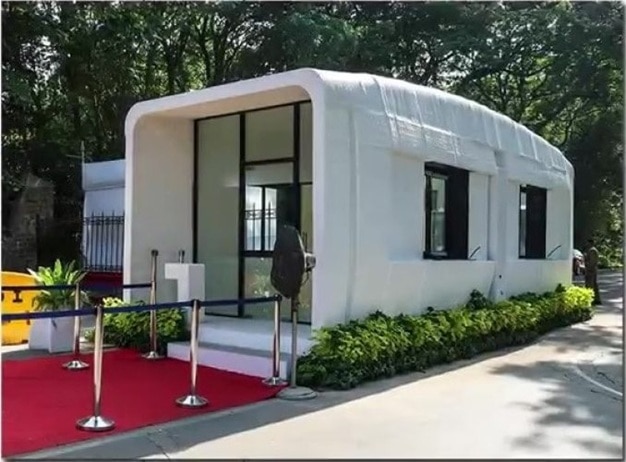In recent years, additive manufacturing has made significant strides in revolutionizing industries such as automotive, aerospace, and healthcare. Application of construction additive manufacturing is also transforming the civil engineering sector, as it helps to overcome the challenges present in conventional methods. Construction additive manufacturing holds tremendous promise for building faster, more sustainable, and cost-effective structures.
In this article by AM Chronicle we’ll explore the exciting future of construction additive manufacturing and the impact it will have on the way we build.
Advantages of Construction Additive Manufacturing
Construction projects often face time constraints and require rapid delivery. Additive manufacturing in construction can significantly accelerate the building process. Large-scale 3D printers can construct entire walls, floors, and even entire buildings in a matter of hours or days, reducing construction timelines from months to weeks. With increased automation and precision, 3D printing can minimize human error and optimize material usage, leading to enhanced construction efficiency.
Traditional construction techniques often come with limitations in terms of design complexity. Additive manufacturing liberates architects and designers from these constraints, enabling the creation of highly intricate and geometrically complex structures. With construction 3D printers, it becomes feasible to construct curvilinear shapes, organic forms, and customized designs that were previously unachievable. This newfound design freedom will pave the way for truly innovative and visually stunning architectural marvels.
One of the most significant advantages of construction additive manufacturing is its potential to reduce construction waste and enhance sustainability. By utilizing precise material deposition, 3D printing technology minimizes material wastage and optimizes resource utilization. Moreover, sustainable and recycled materials can be integrated into the printing process, further reducing the environmental impact of construction. This shift towards sustainable practices aligns with the growing global focus on eco-friendly building methods and materials.

Additive manufacturing has the potential to revolutionize both on-site and off-planet construction. On construction sites, 3D printing can be deployed to quickly erect temporary shelters, disaster relief structures, or even low-cost housing solutions. Additionally, construction additive manufacturing could play a vital role in space exploration and colonization. By using local resources and 3D printers, it becomes feasible to construct habitats and infrastructure on other planets, significantly reducing the cost and logistical challenges associated with space missions.
As the adoption of construction additive manufacturing increases, we can expect significant advancements in construction-specific materials. Researchers are exploring the use of specialized concrete mixtures, bio-based materials, and even composite materials for 3D printing in construction. These materials will offer enhanced strength, durability, and thermal properties, making 3D-printed structures even more robust and resilient.
Construction Additive Manufacturing in Recent Times
Construction additive manufacturing continues to make groundbreaking strides across the globe. Thailand recently unveiled the world’s first 3D-printed medical center, showcasing the potential of this technology in the healthcare sector.

In India, a remarkable feat is taking place as the world’s first 3D-printed temple is being constructed, combining traditional architecture with innovative techniques. Not stopping there, India’s Godrej Construction is collaborating with Tvasta to reveal the country’s first 3D-printed security pavilion, highlighting the versatility of additive manufacturing. India’s LT has constructed the nation’s first 3D-printed post office, demonstrating the potential for cost-effective and rapid infrastructure development.

Meanwhile, Germany is witnessing the construction of Europe’s largest 3D-printed building, exemplifying the scalability of this technology.


Looking beyond Earth, China is set to test 3D printing on the moon, with plans to build habitats using this cutting-edge technology.

Lastly, the world’s first 3D-printed hotel is scheduled to open in 2024, showcasing the growing potential for additive manufacturing in the hospitality industry. These remarkable achievements highlight the transformative power of construction additive manufacturing in diverse sectors, from healthcare and religious structures to infrastructure, space exploration, and hospitality.
Achievements of Construction Additive Manufacturing
The achievements of construction additive manufacturing can be classified into three categories, which are houses, bridges and buildings.
With regard to its significant achievement in application of construction additive manufacturing in housing, In 2016, a company called ICON 3D printed a 2,000-square-foot house in Austin, Texas. The house was built in just 24 hours and cost $10,000.

In 2017, a company called MX3D 3D printed a pedestrian bridge in Amsterdam. The bridge is made of stainless steel and took 6 weeks to print.

In 2018, a company called Winsun 3D printed a 6-story apartment building in China. The building was built in just 12 days and cost $5 million.
Challenges of Construction Additive Manufacturing
There are currently no proper industry standards for 3D printing in construction. This can make it difficult for contractors to choose the right 3D printers and materials for their projects. In addition to this, it also becomes challenging to select construction additive manufacturing for government projects due to lack of proper industry standards.
In addition to this, the cost of construction 3D printers and materials can be a barrier to entry for many contractors. Additionally, contractors and engineers need proper training and knowledge to use the technology as compared to other conventional methods. The third limitation is there is a limited pool of expertise in 3D printing in construction. This can make it difficult for contractors to find qualified personnel to operate 3D printers and to manage 3D printing projects. The fourth limitation is lack of awareness amount the civil engineering professional and proof of concepts with regards to application of construction 3D printing in the industry
Subscribe to AM Chronicle Newsletter to stay connected: https://bit.ly/3fBZ1mP
Follow us on LinkedIn: https://bit.ly/3IjhrFq
Visit for more interesting content on additive manufacturing: https://amchronicle.com



